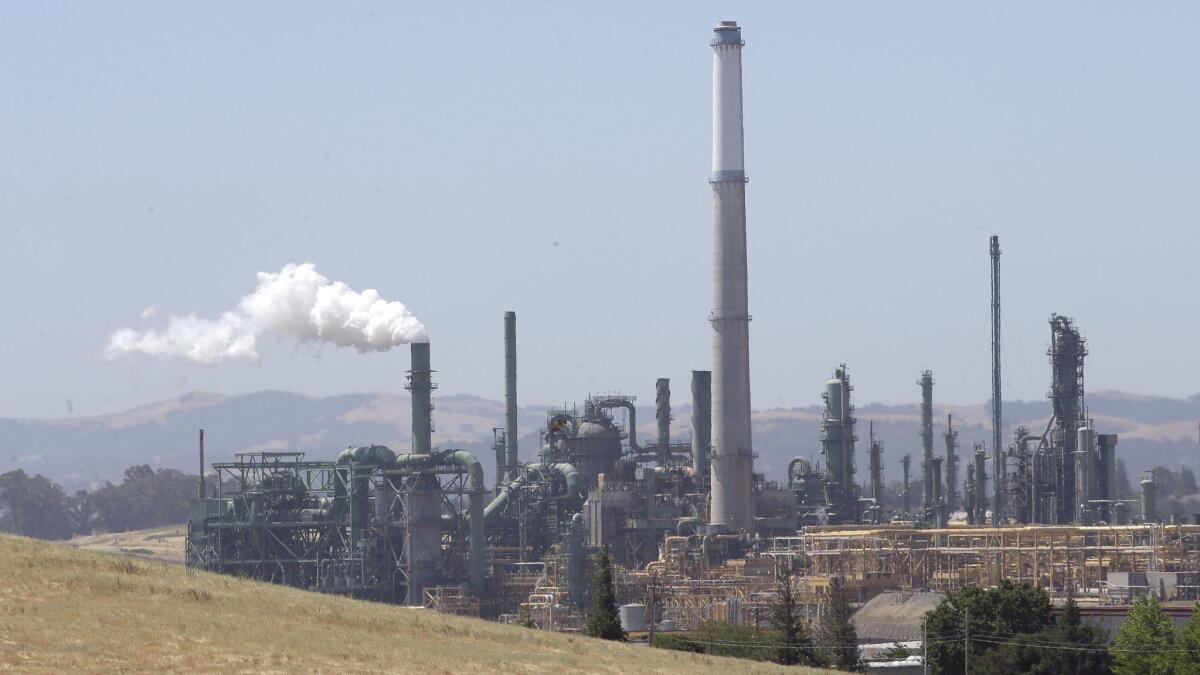U.S. greenhouse gas emissions spiked in 2018 — and it couldn’t have happened at a worse time

- Share via
U.S. carbon dioxide emissions rose an estimated 3.4% in 2018, according to new research — a jarring increase that comes as scientists say the world needs to be aggressively cutting its emissions to avoid the most devastating effects of climate change.
The findings, published Tuesday by the independent economic research firm Rhodium Group, mean that the United States now has a diminishing chance of meeting its pledge under the 2015 Paris climate agreement to dramatically reduce its emissions by 2025.
The findings also underscore how the world’s second-largest emitter, once a global leader in pushing for climate action, has all but abandoned efforts to mitigate the effects of a warming world. President Trump has said he plans to officially withdraw the nation from the Paris climate agreement in 2020 and in the meantime has rolled back Obama administration regulations aimed at reducing the country’s carbon emissions.
“We have lost momentum. There’s no question,” Rob Jackson, a Stanford University professor who studies emissions trends, said of U.S. and global efforts to steer the world toward a more sustainable future.
The sharp emissions rise was fueled primarily by a booming economy, researchers found. But the increase, which could prove to be the second-largest in the last 20 years, probably would not have been as stark without Trump administration rollbacks, said Trevor Houser, a partner at Rhodium.
“I don’t think you would have seen the same increase,” Houser said, referring to the electric-power sector in particular.
Emissions from electric-power generation rose 1.9% in 2018, the analysis found, driven chiefly by more demand for electricity, which was largely satisfied by more burning of natural gas. This fuel emits less greenhouse gas than coal when burned but is still a major contributor overall.
At the same time, emissions from the transportation sector rose 1% thanks to more airline travel and greater on-road shipping. Industrial emissions from factories and other major facilities also rose significantly in 2018, the analysis found.
The figures, based on data from the U.S. Energy Information Administration and other sources, remain an estimate because some data from last year are not finalized. But the trend line is consistent with a recent estimate from a group of academics associated with the Global Carbon Project, which found U.S. emissions likely to rise 2.5% in 2018.
Rising emissions are not just a U.S. problem. Global emissions also reached a record high in 2018, and the increase in the United States goes hand in hand with rising emissions in other countries, such as China and India, said Michael Mehling, deputy director of the Center for Energy and Environmental Policy Research at the Massachusetts Institute of Technology.
“It’s not an isolated phenomenon,” Mehling said, adding that the trend makes it difficult to solely blame the Trump administration’s deregulatory push and its dismissal of climate action for the change. “Such political developments, including the rollback of domestic climate policies in the U.S., tend to have a considerable lead time before you can actually see their reflection in physical emission trends.”
The latest emissions data comes as the world’s scientists have called the global climate problem more urgent than previously thought — making the United States’ emissions trends and its path to withdraw from the Paris agreement more consequential.
Chris Mooney and Brady Dennis write for the Washington Post.
More to Read
Sign up for Essential California
The most important California stories and recommendations in your inbox every morning.
You may occasionally receive promotional content from the Los Angeles Times.













